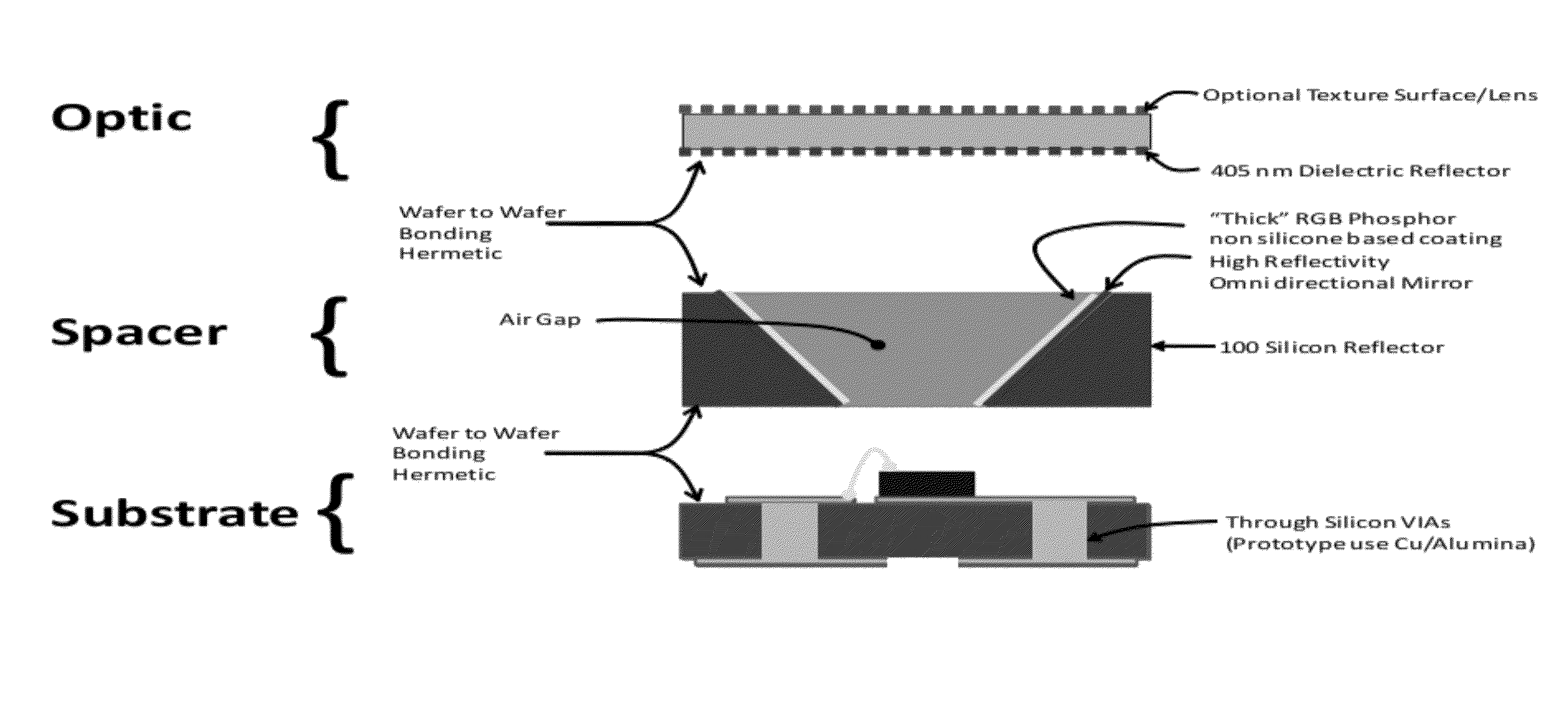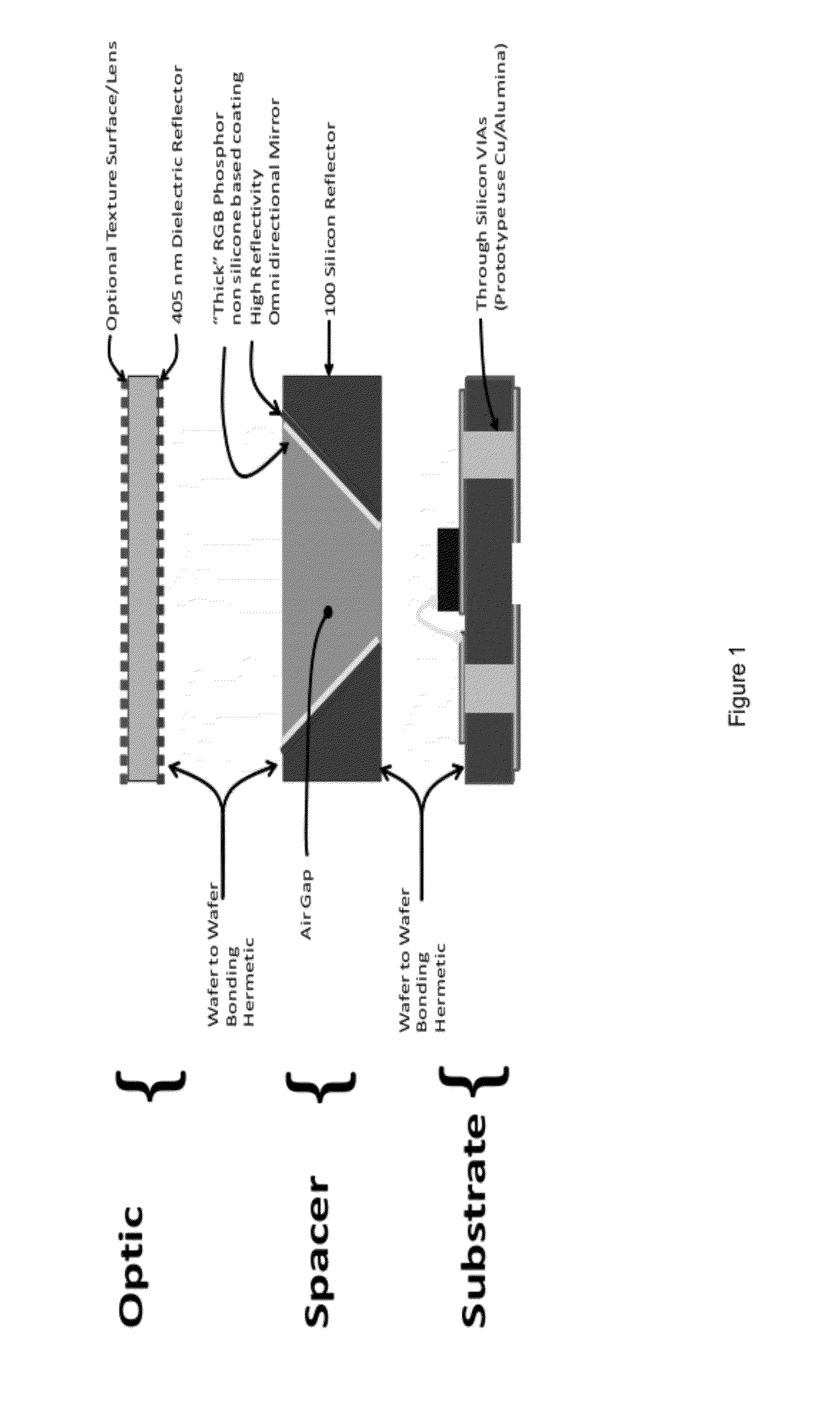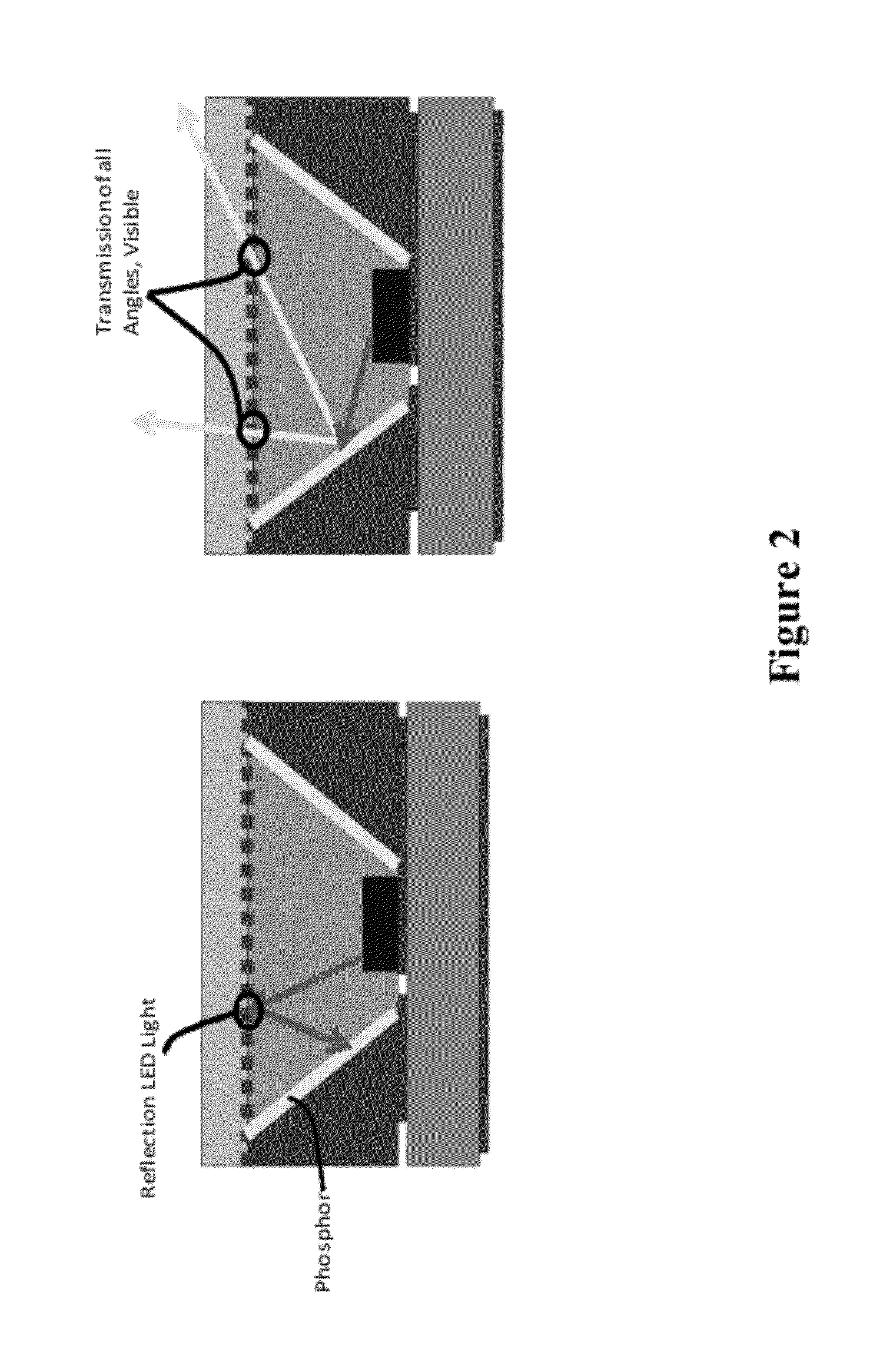Optical device with wavelength selective reflector
a wavelength selective reflector and optical device technology, applied in the field of lighting techniques, can solve the problems of achieving high intensity, reducing efficiency, and reducing efficiency, so as to achieve the effect of improving efficiency and being easy to implemen
- Summary
- Abstract
- Description
- Claims
- Application Information
AI Technical Summary
Benefits of technology
Problems solved by technology
Method used
Image
Examples
Embodiment Construction
[0024]As explained above, conventional LED based optical devices are often inadequate. One of the challenges has been that light emitted by LED devices not being efficiently emitted. More specifically, an LED device is positioned on a substrate and covered by an optic. FIG. 1 is a simplified diagram illustrating an LED package according to an embodiment of the present invention. As shown in FIG. 1, the LED package comprises an optic, a spacer, and a substrate. An LED device is positioned on the substrate. Among other things, the LED package is configured to achieve a high efficiency where the phosphor operates in reflection. In one embodiment, these components are fabricated at the wafer level and assembled before division into individual parts.
[0025]FIG. 2 is a simplified diagram illustrating light path in an LED package. As shown in FIG. 2, the bottom layer of the optic is coated with a dielectric filter. The dielectric is a long pass filter where it reflects the majority of LED l...
PUM
 Login to View More
Login to View More Abstract
Description
Claims
Application Information
 Login to View More
Login to View More - R&D
- Intellectual Property
- Life Sciences
- Materials
- Tech Scout
- Unparalleled Data Quality
- Higher Quality Content
- 60% Fewer Hallucinations
Browse by: Latest US Patents, China's latest patents, Technical Efficacy Thesaurus, Application Domain, Technology Topic, Popular Technical Reports.
© 2025 PatSnap. All rights reserved.Legal|Privacy policy|Modern Slavery Act Transparency Statement|Sitemap|About US| Contact US: help@patsnap.com



